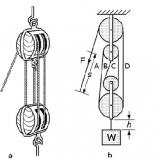SERVICE ROBOTS in Nursing Homes 11095
Care-O-bot 3 and CASERO
Target of the WiMi-Care Project was the design of application scenarios for service robots to support the staff of residential care facilities. The autonomous guided vehicle (AGV) CASERO® by MLR System GmbH and the service robot Care-O-bot ® 3 by Fraunhofer IPA were selected for implementation. The video shows the robots in operation in a nursing home in Stuttgart, Germany.
Care-o-Bot DETAILS
For more than ten years, Fraunhofer IPA is working on the development of a mobile robot assistant Care-O-bot® able to assist humans in their daily life. The meanwhile third generation of this successful development series is characterized by a product like system design and for the first time provides the potential to apply manipulating mobile service robots in everyday environments. By using industrial components approved in daily practice the dependability of the system can be ensured.
Flexible, Autonomous Navigation
Care-O-bot® 3 has an omnidirectional platform, with four steered and driven wheels. This kinematic system enables the robot to move in any desired direction and therefore also safely to negotiate narrow passages. In doing so, Care-O-bot® 3 is also able to autonomously plan and follow an optimal, collision free path to a given target. Dynamic obstacles such as persons are detected by sensors and avoided automatically.
Manipulation and Grasping
Care-O-bot® 3 is equipped with a highly flexible, commercial arm with seven degrees of freedom as well as with a three-finger hand. This makes it capable of gripping and operating a large number of different everyday objects. Using tactile sensors in the fingers, Care-O-bot® 3 is able to adjust the grasping force. In order to grasp an object, Care-O-bot® 3 approaches tables or cupboards with its backside. The arm is long enough to grasp objects even from the floor or to reach high shelves. The seventh degree of freedom allows the robot to reach around obstacles. In addition, the arm is used to position objects on the tray. By synchronizing arm and platform movements, Care-O-bot® 3 is additionally able to autonomously open doors that block its way to the target.
Environment Perception
A multiplicity of sensors enables Care-O-bot® 3 to detect the environment in which it is operating. These range from stereo vision colour cameras and laser scanners to a 3D depth-image camera. The sensors serve, for example, to detect and locate relevant environment structures, objects for manipulation as well as obstacles in the robot’s environment. Care-O-bot® 3 is additionally capable of learning new objects independently. Its 3D sensors enable it to monitor manipulation operations in real-time, thereby enhancing the safety and dependability of the manipulation process.
Aggregation of a geometric map with Care-O-bot in simulation Video
Dimensions (L/W/H): 75/55/145 cm
Weight: 180 kg
Power supply: Gaia rechargeable Li ion battery 60 Ah, 48 V
Internal: 48 V, 12 V, 5 V
separate power supplies to motors and controllers
All motors connected to emergency-stop circuit
Omnidirectional platform: Neobotix MOR including
8 motors (2 motors per wheel: 1 for rotation axis, 1 for drive)
Elmo controllers (CAN interface)
2 SICK S300 laser scanners
1 Hokuyu URG-04LX laser scanner
Speed: up to 1.5 m/s
Arm: Schunk LWA 3 (extended to 120 cm)
CAN interface (1000 kbaud)
Payload: 3 kg
Gripper: Schunk SDH with tactile sensor
CAN interfaces for tactile sensors and fingers
Torso: 1 Schunk PW 90 pan/tilt unit
1 Schunk PW 70 pan/tilt unit
1 Nanotec DB42M axis
Elmo controller (CAN interface)
Sensor head: 2 AVT Pike 145 C, 1394b, 1330×1038 (stereo circuit)
MESA Swissranger 4000 or Microsoft Kinect
Tray: 1 Schunk PRL 100 axis
LCD display
Touch screen
Processor architecture: 3 PCs (2 GHz Pentium M, 1 GB RAM, 40 GB HDD)
Links:
http://www.care-o-bot.de/english/Cob3_Software.php
http://www.care-o-bot-research.org/



